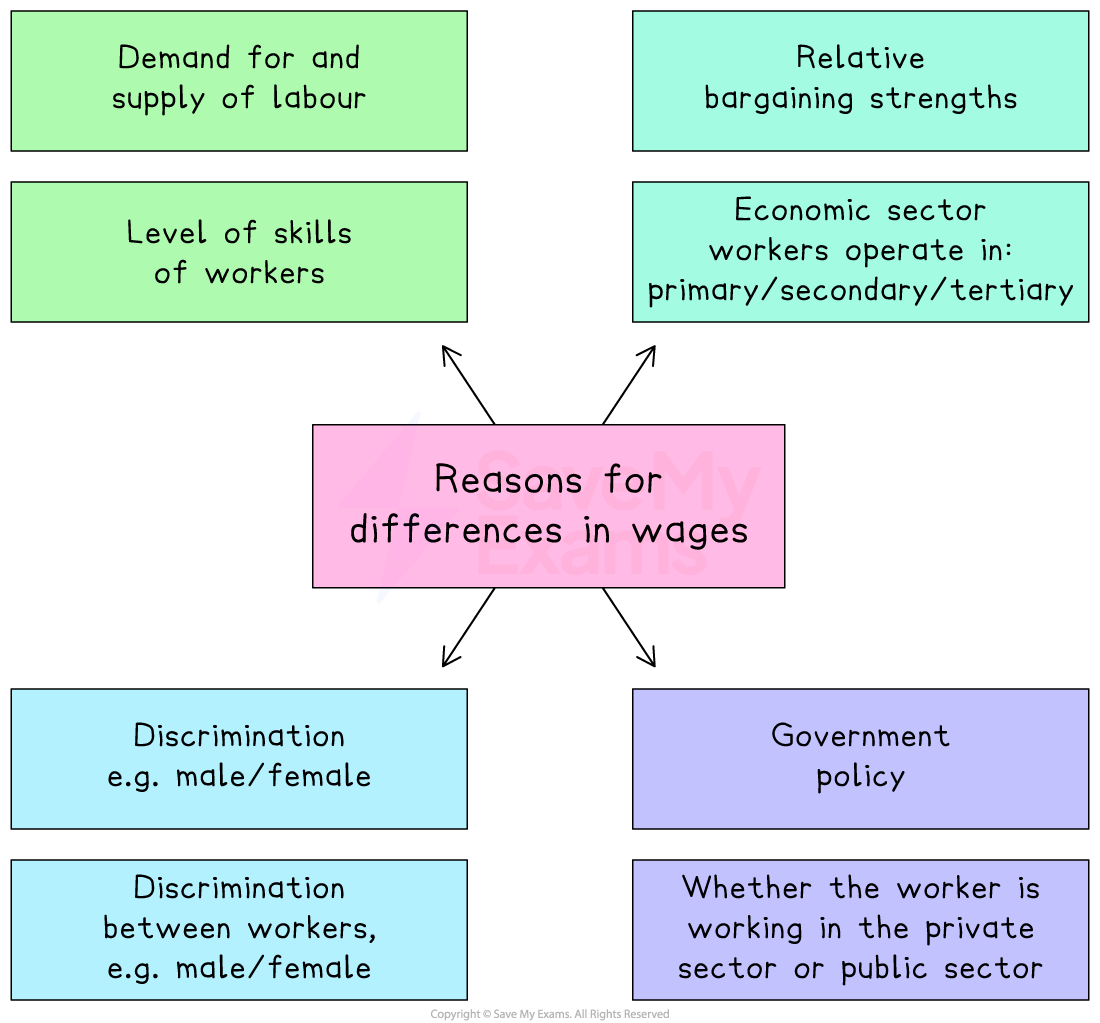Syllabus Edition
First teaching 2025
First exams 2027
Wage Differentials (Cambridge (CIE) IGCSE Economics): Revision Note
Exam code: 0455 & 0987
What causes differences in wage levels?
Wage levels vary significantly across occupations, industries, and even between workers doing similar jobs
These differences arise from a combination of market forces, institutional factors, and social influences

In competitive labour markets, wages are largely determined by the interaction between the demand for labour and the supply of labour
However, other factors such as bargaining power, government policy, and discrimination can also play a decisive role
The impact of these influences often depends on the worker’s skill level, the sector in which they operate (primary, secondary, or tertiary), and whether they work in the private or public sector
Explaining wage differentials
1. High demand + low supply → higher wages

For example, specialist surgeons or talented basketball players have scarce skills, pushing wages up
2. Wage differentials between skilled and unskilled workers
Many economies have a high supply of unskilled labour
This means that employers can push wages down, as there is always someone willing to work for less (take-it-or-leave-it approach to wages)
To become skilled takes time and money, which means that there is a more limited supply of specific skill sets
In recognition of these factors, wages for skilled workers are higher
3. Wage differentials in the primary, secondary and tertiary sectors
Primary sector workers are usually paid low wages due to the unskilled nature of the job and the fact that raw materials often generate the lowest profits in the production chain
Secondary sector workers add value to the raw materials, and these products sell for higher profits. Therefore wages tend to be higher than primary sector wages
Tertiary sector workers are paid the highest. Their jobs often require highly valued skills that take years to acquire and the products they sell or services they provide can be complex and expensive, e.g., artificial intelligence coders
4. Wage differentials between private and public sector workers
Public sector organisations are owned and controlled by the government
Private sector organisations are owned and controlled by private individuals and firms
Differences between private and public sector pay
Private sector workers | Public sector workers |
|---|---|
|
|
5. Wage differentials due to relative bargaining strengths
Trade unions: Strong unions can negotiate higher pay and better conditions
For example, skilled workers in strong unions end up with higher wages (such as pilots)
Employer power: In industries with few alternative employers, firms may keep wages lower
Public sector: Often has collective bargaining and trade union representation, but wage growth may be limited by government budgets
Private sector: There is more scope for negotiation if worker skills are in high demand by the firms
6. Wage differentials due to discrimination
Workers may be paid differently due to gender, ethnicity, disability or other biases, regardless of skill or productivity
This results in wage gaps between groups with similar qualifications and experience
Gender pay gap
The gender pay gap is the difference in the average earnings between men and women across the workforce, expressed as a percentage of men’s earnings
It reflects overall differences in pay, not just unequal pay for the same job
Causes can include differences in occupation types, working hours, career breaks, seniority and discrimination
A positive gender pay gap means men earn more on average; a negative gap means women earn more on average
Example
In 2023, the UK’s national gender pay gap was around 14%, meaning that, on average, women earned 14% less per hour than men

Unlock more, it's free!
Did this page help you?